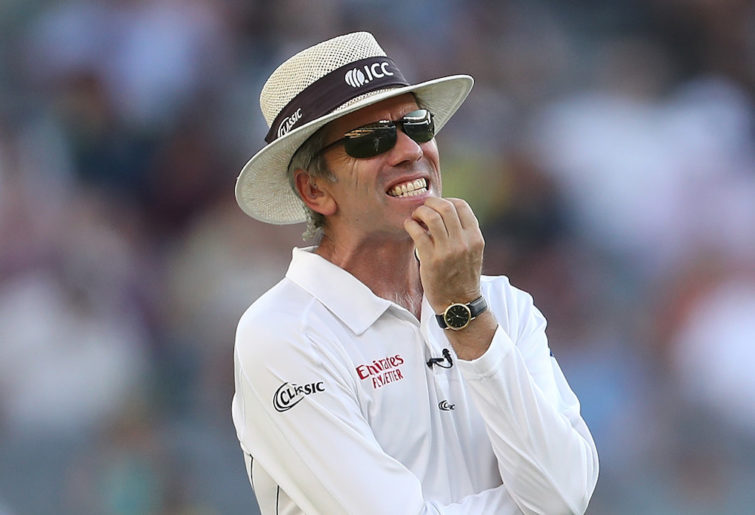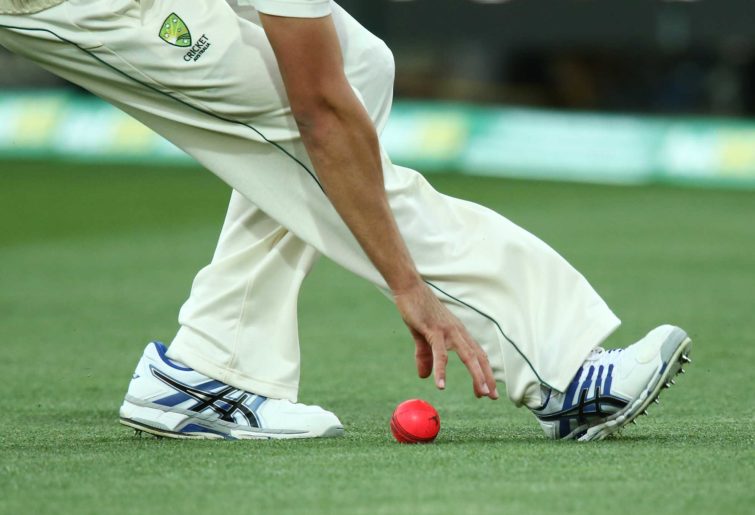This is not a clickbait title. I’m serious. There’s no need for sides to have to play 90 overs of cricket per day.
Before the cricket purists start frothing at the mouth, it’s important to understand the purpose behind this title.
There’s been talk for decades about what cricket viewers want. Slow over rates were linked to boring draws in which sides would be lucky to bowl 80 overs during scheduled hours while batsmen made little effort to score. In this era slow hand-clapping was commonplace, and more than once Test sides were booed off the field for playing negative cricket.
The other factor behind over rates is offering value to spectators. Vocal supporters like Richie Benaud banged on about people paying good money to come to games and having the expectation that players would get through 90 overs.
I’m sure the TV channels Benaud worked for are happy with a 90-over day – there are now more ad breaks, after all – but is that a reason to continue the practice?
How many drawn games happen now – especially boring draws – and how many games go deep into the fifth day?

(Photo by Paul Kane – CA/Cricket Australia via Getty Images)
Rather than properly examine the issues around the need for a 90-over day, the game’s lawmakers took a sledgehammer approach to the issue. They decided that across six hours, regardless of the playing conditions, the type of attack a side has et cetera, each team must bowl 90 overs or an over every four minutes.
Interestingly, this is not a law of the game but a match condition, yet it can have serious ramifications for teams.
In 2019 West Indies captain Jason Holder was banned from the last Test of the home series against England because he was blamed for his team’s slow over rate in the second Test.
The ludicrous part of this decision was that the game was over in three days, yet Holder, who was arguably the player of the series, missed the final Test because the ICC decided his side – with a four-pronged pace attack – bowled England out twice too slowly!
Many will no doubt argue that teams got through 90 overs ‘in the good old days’, and that was probably the case when sides played two spinners, but since the early 1990s this ‘solution’ has caused more problems than it has fixed.
To put this in some perspective, across all forms of international cricket since 1992 there have been in excess of 480 breaches by teams, almost all of which were ascribed to the fielding captain, yet batsmen are as much to blame for time lost during an innings, certainly at Test level.

(Photo by Morne de Klerk/Getty Images)
Test cricket, like all other sport, has two phases: game time and downtime. Game time begins when an over starts, and it stops when each over is completed. Downtime is all the rest of the time in a normal day’s play.
There’s any number of other factors that also contribute to downtime in games, some of which are within the control of the fielding side and others that are completely the responsibility of the batsmen.
The current ICC approach is to try and fix a non-problem – game time – rather than fix the real culprit, which is actually downtime. The laws of the game exist to prevent this issue from happening, but they need to be tweaked and enforced.
Law 11 is all about intervals – that is, how long should meal and drinks breaks take.
There’s no need for a 40-minute meal break, especially in a traditional Test match, for which the players have been on the field for only two hours. In this day and age they’re not going to be eating a four-course meal. This law needs to be changed so that the break is reduced to no more than 30 minutes, which is plenty of time for someone to have something to eat, a rest et cetera.
Law 11.8 refers to drink breaks, and it’s clearly written that the time taken for this cannot exceed five minutes.
How many drinks breaks (a) are needed given the invasions by day-glo vests carrying drinks onto the field every time there’s a break in play and (b) when was the last time a drink break took only five minutes?
This law should be tweaked so a drinks break happens only if a batsman has not been dismissed in the previous hour’s play. Fielders needing a drink can either run to the boundary between overs or field on the boundary, where theu can easily get a drink.
Law 40.1 is all about the possibility of timing out batsmen. If a wicket falls, the incoming batsman has three minutes to get to the wicket and be ready to take guard. If the batsmen crossed, so if the incoming batsman is at the non-striker’s end, they have three minutes to be ready to face the next ball. If the batsman takes too long, they can be given out, timed out.
Three minutes is a very generous amount of time for a batsman to get to the wicket only. I’m not suggesting any batsman should be given out timed out, but this is another law that should be tweaked.
If a batsman has asked for a review, the incoming batsman has two minutes to not only get to the wicket but to also be ready to face the next delivery once the umpire signals the reviewing batsman is out. If the batsmen cross, the same time frame applies. If there’s no review, the incoming batsman has three minutes to be ready to face the next delivery.
Fielding captains cannot delay this process either. If they need to make field changes, they have the time it takes for the batsman to face up to do so.

(Scott Barbour/Getty Images)
Law 41 deals with unfair play. The parts I want to examine deal with time-wasting by the fielding side (law 41.9) and time-wasting by the batting side (41.10).
I don’t want to discuss specific time-wasting, mostly because there’s so much of it happening and all readers could come up with a list of 20 or 30 items without much thought. Suffice it to say, it happens a lot and umpires rarely if ever penalise batsmen and only penalise fielding captains after a day’s play.
Test-level umpires are very experienced and know when batsmen or the fielding side are wasting time during an over. In addition, they have the third umpire who can also keep an eye on that aspect of the game. If they think one or the other team is time-wasting during an over, they need to apply law 41.
A simple change would also help save time. At the end of an over players on the field should be given 40 seconds to get into position and batsmen be ready to face up the first ball of the next over.
That means that if batsmen want to change their gloves for the seventh time that session, have yet another drink, have a yarn et cetera, they’ve got 40 seconds from the time the umpire calls “over” to do so.
Ditto with the fielding side. The captain must have his team in the positions he wants for the first ball of the next over and the bowler must be ready to deliver the ball within that 40-second window.
Countdown clocks should be visible around the ground, perhaps showing up on the electronic scoreboards. Umpires should also have the discretion to stop the countdown if they feel there’s a valid reason for doing so – for example, if a player is injured and needs simple medical treatment.
Law 41 allows umpires who consider time’s being wasted to warn the batsmen or the fielding captain. They get one warning, and if they breach after that, their team incurs a five-run penalty for each and every offence. This is a part of the law that must be enforced.
The penalty phase becomes critical in tight finishes, especially if only one side or the other can win the Test. Umpires have to show courage and penalise teams who go slow during overs and these suggestions empower them to do exactly that.
If these changes were adopted, there should be no need for a rule forcing sides to bowl 90 overs in a day, because with all that time saved, there’d be few reasons why sides couldn’t bowl that many overs or more in a normal days play.
































































































